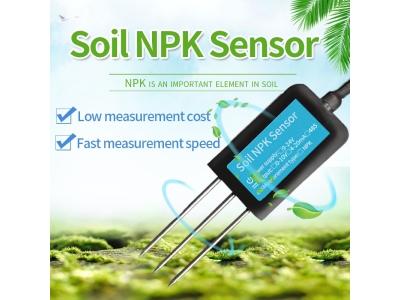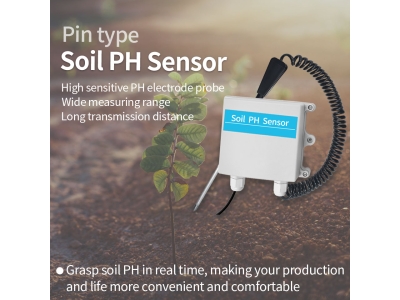Sustainable farming practices have become increasingly important in recent years as the global population continues to grow, and there is a greater emphasis on the need for efficient and environmentally friendly agricultural methods. One key factor in achieving sustainable farming is ensuring proper soil management. Soil sensor technology has emerged as a powerful tool to assist farmers in monitoring and managing soil health and fertility. This article will delve into the role of soil sensor technology in sustainable farming practices, its benefits, and its potential future implications.

What are Soil Sensors?
Soil sensors are devices that measure various soil characteristics, such as moisture content, temperature, nutrient levels, and pH levels. These sensors are typically placed in the ground, either permanently or temporarily, and collect data that can be used to assess soil health and guide decision-making processes in farming operations.
Benefits of Soil Sensor Technology:
2.1 Precise Irrigation Management:
One significant advantage of soil sensor technology is its ability to provide accurate information on soil moisture levels. This data helps farmers optimize irrigation practices by avoiding over or under watering. Over-irrigation can lead to water wastage and leaching of nutrients, while under-irrigation can result in crop stress and reduced yields. Soil sensors enable farmers to apply water precisely where and when it is needed, enhancing water-use efficiency and reducing environmental impact.
2.2 Nutrient Management:
Soil sensors also play a crucial role in managing nutrient levels in the soil. By measuring the concentrations of essential nutrients, such as nitrogen, phosphorus, and potassium, farmers can determine optimal fertilizer application rates. This prevents excessive nutrient use, which can result in water pollution and ecosystem degradation. Additionally, soil sensors can detect nutrient deficiencies, allowing for timely corrective actions to be implemented.
2.3 Enhanced Crop Planning:
Accurate soil data collected by sensors helps farmers make informed decisions regarding crop selection and planting strategies. Different crops have varying soil requirements, and soil sensors provide the necessary information to choose suitable crops for a particular area. This leads to improved yield potential, reduced input costs, and minimized soil depletion.
2.4 Disease and Pest Management:
Soil sensors can also assist in detecting and managing diseases and pests that affect crops. Certain sensors can detect soil-borne pathogens and alert farmers to potential risks. By identifying problem areas early, farmers can take preventive measures, such as implementing crop rotation or adjusting irrigation and fertilization practices, to mitigate crop damage and reduce the need for chemical interventions.
Future Implications:
The use of soil sensor technology in sustainable farming practices is expected to expand in the future, driven by advancements in sensor capabilities, data analysis, and integration with other agricultural technologies. Here are some potential future implications:
3.1 Precision Agriculture:
Soil sensors, combined with other technologies like drones and satellite imagery, can enable precision agriculture. Farmers can create detailed maps of soil characteristics, allowing for site-specific management practices. This level of precision increases productivity while minimizing resource waste.
3.2 Automated Decision-Making:
As soil sensor technology advances, automated decision-making systems can be developed. Artificial intelligence algorithms can interpret sensor data in real-time and provide recommendations for irrigation, fertilization, and other management practices. This can lead to more efficient and sustainable farming operations.
3.3 Climate Change Adaptation:
Climate change poses significant challenges to agriculture, including changes in temperature, precipitation patterns, and extreme weather events. Soil sensors can help farmers monitor and adapt to these changes by providing crucial data on soil moisture, temperature, and nutrient conditions. Armed with this information, farmers can adjust planting schedules, implement appropriate irrigation strategies, and select climate-resilient crop varieties.
Conclusion:
Soil sensor technology holds immense potential in supporting sustainable farming practices. By providing real-time data on soil moisture, nutrient levels, and other key parameters, these sensors enable farmers to make informed decisions, optimize resource use, and enhance crop productivity while minimizing environmental impact. As technology continues to advance, the role of soil sensors in agriculture is likely to expand, revolutionizing farming practices and contributing to a more sustainable food production system.






